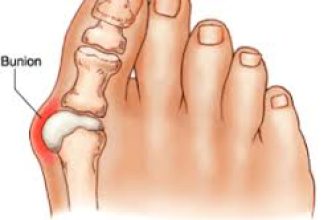Bunion pain is an ongoing problem for you and literally. Bony protrusions located at the base of your big toe don’t just create discomfort and pain, but they restrict your ability to wear the shoes that you like and take part in activities that you are passionate about. If conservative treatment options like wide orthotics and shoes fail to give relief, surgery becomes an alternative. However, who do you turn in the event of a bunion-related surgery? Although orthopedic surgeons have an extensive range of the musculoskeletal field A podiatrist can provide the best advantage in the treatment of bunions. This is why a podiatrist should be your first choice for bunion related treatment.
The Deep Dive in to Foot and Ankle Anatomy
Podiatrists are medical specialists that specialize in diagnosing and treating diseases that affect the ankle and foot. Their training is centered on this specialized area of the body that includes the muscles, bones and ligaments, skin, nerves, as well as blood vessels. This knowledge-based approach leads to a greater understanding of biomechanics in the foot as well as the particular elements that influence the formation of a bunion.
Sharpened Skills for Bunion Correction
Podiatrists invest a substantial portion of their time in residency improving their surgical abilities specifically designed for ankle and foot issues. This includes a particular concentration on bunionectomy procedures and mastering various methods such as Cheilectomy Akin osteotomy, chevron osteotomy and Lapidus bunionectomy. The specialized training results in an understanding of these procedures which could lead to shorter surgical times, better surgical accuracy, and less complications.
A Comprehensive Approach to Bunion Care
Podiatrists aren’t limited to performing surgeries; they provide an extensive method of bunion treatment in Perth. They begin by performing an exhaustive physical examination using X-rays, then analyzing X-rays to determine how severe the defect and then talking about details of your history with regard to medical conditions and levels of pain. This approach is holistic and permits them to create the treatment plan, which may initially include conservative measures such as padding, orthotics and anti-inflammatory drugs. Surgery is only recommended after exhausting all options, and when it’s the best option to meet your particular requirements.
Post-Operative Care: A Foot-Focused Advantage
After bunionectomy, proper post-operative care is essential to ensure long-term healing and results. Podiatrists are equipped to help you through the process of healing. They are aware of the particular requirements of your foot when healing and will give specific physical therapy suggestions to increase flexibility and strength. They can also solve any post-operative issues that you may face, ensuring the smoothest and most successful recovery.
Beyond Surgery: Long-Term Bunion Management
Podiatrists aren’t only treating bunions. They also assist in preventing the recurrence of bunions. They will advise you on the best footwear options, with sufficient arch support and large toe boxes that adapt to your foot’s unique shape. They may also suggest the possibility of custom orthotics to aid in proper alignment of your feet and biomechanics, thereby reducing the chance of bunion-related issues.
Building Trust with a Foot Specialist
Health of the feet is often ignored however it is a vital aspect of overall health. Podiatrists who are committed to treatment of ankles and feet know the specific problems that sufferers with bunions have to face. They are a reliable companion on your way to free of pain, providing an open ear, precise explanations, and customized treatment plans that are tailored to the specific needs of your.
Considering Additional Factors
A podiatrist’s experience in issues with ankles and feet is a great option for bunion surgery, there are other factors to take into account when making a choice. Find potential podiatrists in your area, ask about their experiences with bunionectomy procedures and arrange consultations with them to discuss your issues and options for treatment. You can ask questions about their accreditation, success rates and surgical methods.
Can You Really Cure Them at Home?
Bunions, the bony bumps that sit at the base of your toe’s big one can be quite painful (literally!). Although they may not appear to be a big problem initially but the pain they cause can be a major impact on your everyday life. However, before you commit to a procedure, you may be thinking: can bunions be treated at home?
A quick answer that there’s no 100 “cure” for bunions at home. The cause of bunions is an imbalance in the joint that runs from the bottom of your toe’s big one. The reason for this is caused by a variety of factors, including the genetics of your foot, footwear choices or a specific foot condition. However, just fixing these issues at home will not totally reverse the bony bump.
There are a variety of remedies at home that can aid in managing bunion pain and stop further progress. Here are a few strategies to look into:
Footwear Matters:
- Don’t wear tight shoes: High heels, pointed shoes, and all footwear that restricts your toes may cause bunions to get worse. Choose shoes that are wider and have strong arch support. This will give you enough space for your toes and a proper alignment.
- Helpful Inserts Think about orthotic inserts which can help distribute stress away from bunion and improve foot alignment.
Soothing Strategies:
- Soaking it up: A warm Epsom salt baths work to reduce the pain and inflammation. You can soak your feet in the bath for 15 to 20 minutes every day to get some relief.
- Icy Relief Wrap ice cubes in thin fabric directly on the bunion for 15 to 20 minutes at a stretch, a couple of times throughout the day. This will help to lessen pain and swelling.
- Pain Management The use of over-the-counter pain relief medications such as Acetaminophen or Ibuprofen can be used to assist in reducing discomfort.
Stretching and Strengthening:
- Toe Yoga Toe stretching exercises that are gentle can increase mobility and flexibility the big joint of your toe. Try spreading your toes and picking up marbles using your toes as well as rolling the tennis ball beneath your foot.
- Training for Strengthening the Foot Training exercises that focus on the muscles of the feet can assist in enhancing stability and alignment. Find exercises on the internet or talk to the advice of a physical therapist.
Lifestyle Modifications:
- Maintain a healthy weight: Excess weight puts more stress on your foot, particularly your bunion joint. A healthy weight will relieve the pressure and discomfort.
- Pay attention to your posture. Poor posture could affect the alignment of your feet. Maintain a healthy sitting and standing posture to ensure that your weight is evenly distributed across your body.
Keep in Mind:
Although these simple remedies may offer relief and may slow progression of the bunion but they aren’t able to fully “cure” the existing bony bump. If the bunion pain you’re experiencing is severe, impedes everyday activities, or gets worse despite these methods, seeking out a podiatrist (foot and ankle specialist) is essential. They will assess your particular condition and offer alternatives to treat it which include bunionectomy surgery when necessary.
Conclusion: Stepping into a Pain-Free Future
The procedure of bunion is a crucial decision and choosing the best foot surgeon in Perth is crucial. While orthopedic surgeons provide valuable experience, a podiatrist’s extensive knowledge of the foot and ankle, in conjunction with their specialization on bunionectomy techniques, makes them as a top option for treatment of bunion related issues. Their holistic method, from the initial assessment to the post-operative treatment and long-term treatment, will ensure that you receive the most effective care possible for the best possible outcome. Take control for your feet’s health will allow you to live an independent life, free of limitation of your bunion.




